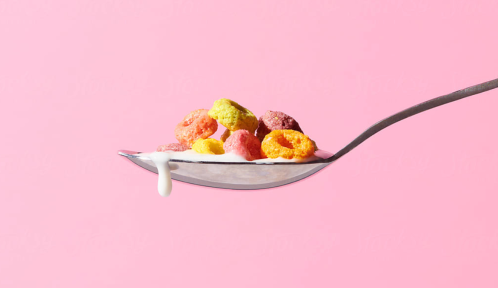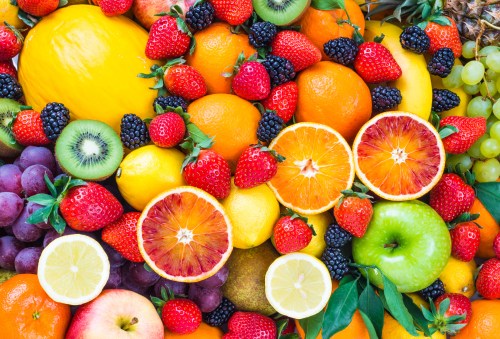Our editors independently select these products. Making a purchase through our links may earn Well+Good a commission
As much as I try to prioritize healthy, balanced fare for my meals, I can’t say no to sugary gummies and fruit snacks. Over the past year or so, I’ve made a bigger effort to reduce my added sugar intake, as I know that my decades-long habit isn’t doing my gut, skin, or overall health any favors. But I’ve noticed that when I can successfully ditch my sugary treats for a week or longer, my first bite back into sweets seems to be much more potent than usual…which got me thinking: What happens to your taste buds when you stop eating sugar?
Experts in This Article
registered dietitian and nationally-recognized food, nutrition, and wellness expert with a private nutrition counseling practice
In search of answers about my potentially shifting palate—in addition to what other wellness wins I can anticipate by limiting my added sugar intake—I reached out to Samantha Cassetty, RD, nutrition and wellness expert and co-author of Sugar Shock.
What happens to your taste buds when you stop eating sugar?
It turns out I wasn’t imagining things. Research shows that while you may have a natural propensity towards certain foods and food categories (in my case, sugar), taste sensation can absolutely change by modifying your diet.
“As you reduce sugar, you might notice that foods you once found bland or not sweet enough start to taste more flavorful,” Cassetty explains. “Your palate becomes more sensitive to natural sweetness in real foods like fruits and even vegetables.”
She adds that plain drinks—like unsweetened coffee, tea, and even plain H2O—will also become more palatable. (Not to mention you’ll likely experience a heightened gustatory sugar shock if and when you do eventually bite back into a sugary treat.)
Cassetty says it takes about two weeks for your taste buds to adapt to a lower sugar intake. A small 2014 study published in The Permanente Journal found that this timeframe was, indeed, the *sweet* spot: After 20 participants cut all added sugars (as well as artificial sweeteners) for two weeks, 95 percent of them thought sweet foods and drinks tasted sweeter than normal or too sweet for their liking, and 75 percent of them found other foods to taste sweeter.
Health benefits of limiting added sugar
As your taste buds change by quitting (or reducing) added sugar, so will your cravings. In the 2014 study cited above, a whopping 86.6 percent of participants stopped craving sugar after only six days without it. Better yet, you’ll make more room in your rotation for whole foods. Cassetty says that when you swap added sugar for whole foods—ideally including lots of plant-based goodies—you can anticipate benefits such as:
- More energy
- Better sleep
- A more stable mood
- Skin benefits (including less acne and fewer wrinkles)
- Improved immune function
- Reduced risk of chronic diseases (including type 2 diabetes, heart disease, and certain cancers)
“Countless people have told me they didn’t realize how poorly they felt until they started reducing added sugars and focusing on healthier whole foods,” Cassetty adds.
5 ways successfully reduce added sugar in your diet
Though paring down your intake of added sugars is easier said than done, it’s far from impossible—especially if you heed the following pro tips.
1. Take a slow and steady approach
Going cold turkey can backfire, which is why Cassetty typically advises taking a less drastic, more sustainable approach to reducing added sugar in your diet. “Some people find they get obsessive thoughts about food when they overly restrict foods they love,” she warns.
When starting out, she suggests honing in on your personal sugar culprits and reducing them in your diet whenever possible. (Again, since I personally can’t resist gummies I’ll try to resist buying them, whereas other people might take care to pass up on sugary sodas, rich desserts, or other sweet treats on a more consistent basis.)
2. Make smart swaps
As you start reducing your specific sugary treat(s), Cassetty recommends making substitutions for other sugar-laden fare in your regular rotation. “Start reading labels to see if you can make lower-sugar swaps for foods like plant-based milks, condiments, soups, cereals, yogurts, and breads—foods you might not expect to be high in added sugars,” she advises. Since each of these sources can contribute to your daily sugar intake without you noticing it, low- or no-sugar swaps will complement your efforts to change your palate, cravings, and well-being for the better.
Tip: Instead of tossing out some sugary items you have on hand, Cassetty suggests cutting them with your new plain or unflavored substitutions. “This works with yogurt, cereal, oatmeal, and some drinks—say, by mixing fruit juice or a fruity drink with seltzer or plain water,” she explains.
3. Enjoy healthier sweets
Just because you’re on a mission to reduce added sugar, it doesn’t mean that you need to lay off the sweets completely. Cassetty says that there are plenty of ways to satisfy your sweet tooth with healthier, no-less-tasty treats, which she even suggests enjoying on a regular basis.
“For me, those are things like cocoa-dusted almonds, lower-sugar cookies (such as those from Simple Mills), frozen bananas with some peanut butter and chocolate chips, and dates stuffed with various fillings,” she shares. (Personally, I find that fruit leathers and dried fruit with no added sugar are pretty seamless stand-ins for my specific sugar cravings.) “When you cut back on added sugars, these foods will taste sweeter and can satisfy the urge for a treat.”
4. Don’t fear natural sugars in fruit
It’s important to make a few distinctions between natural sugar and added sugar. “There’s a difference between sugar that occurs naturally in fruit and milk and the sugar that’s added to food to enhance its taste,” Cassetty explains. If you’re trying to limit your sugar intake, you shouldn’t worry about fruit or low-fat, unsweetened dairy products (so long as you can tolerate them and don’t have food allergies within these categories).
“The majority of people don’t eat enough fruit, so I hate to think that someone is missing out on all of the nutrients and benefits that come from eating fruit because they mistakenly think it’s got too much sugar,” she continues. “All unsweetened fruits are beneficial.”
Natural sweeteners like honey and maple syrup, on the other hand, should be consumed in moderation and may be worth limiting as you try to adjust your sugar habits. “They’re my preferred sweeteners because they contain some healthful antioxidants and other health-protecting properties,” Cassetty says, “but they should still be factored into the amount of sugar you eat daily.”
5. Enjoy your preferred treats in moderation
Unless you’ve been advised by a health professional to quit added sugar completely, Cassetty says there’s a time and place to include it in your diet. Above all, she suggests being intentional about your intake.
“It’s totally fine to include some sugary foods in your diet, but I’d suggest choosing the ones that you really enjoy and then creating a mindful experience around eating them,” she shares. “That means sitting down, using a plate or bowl, taking time to eat, and making some mental notes describing what you’re eating and why you like it.”
In other words, you can maximize the pleasure of eating a sugary treat by taking the time to truly enjoy its flavors, textures, sensations, and so forth. Also, make sure to eat a balanced diet—including wholesome carbohydrates—and eat until you’re comfortably satisfied at meals,” Cassetty concludes. “It’s much easier to manage cravings when you’re not ravenous.”
Sign Up for Our Daily Newsletter
Get all the latest in wellness, trends, food, fitness, beauty, and more delivered right to your inbox.
Got it, you've been added to our email list.










